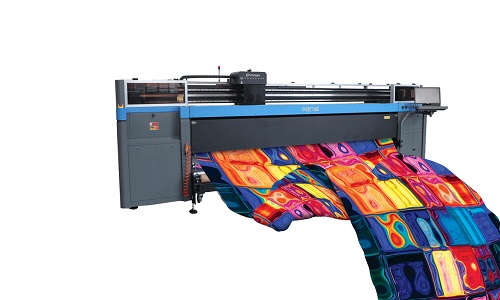Digital Textile Printing is the process of reproducing digital images via thermal transfer, using a solid inkjet printer. The digital textiles that are produced are usually garments, such as clothing, bedding, etc. The need for such high quality clothing items was created because of the increase in the number of people who are looking for trendy clothes. Digital Textile Printing has provided business owners and retailers with affordable clothing options that do not have to set up a factory to produce them.
The digital textile printing market was estimated to be worth $377 million in 2021, and is projected to reach $611 million by 2021, increasing at a CAGR of over 10%. This indicates how profitable it can be. Traditional textile printers are not suitable for mass production, though they have the advantage of being very easy to use. Traditional textile printers also consume a lot of electricity and they are very large, making them difficult to be installed in small-sized business establishments.
The main source of competition for these types of printers is the rapid growth of the digital textile printing machine industry. These machines are cheaper compared to traditional printers and they produce high quality prints. The biggest challenge for these machines is to gain the attention of customers so that they will buy from them and keep on using them. They are already being used by several manufacturers in the clothing industry and they continue to expand at a rapid rate. They are also being used in other industries, such as the medical industry, where they are used in creating durable surgical bidding.
The digital textile printing machine industry is expanding fast because it is used for several different purposes. One of the most common uses is to make fabrics that are more affordable compared to natural fibers. They are also useful for people who are allergic to natural fiber materials. Another common use of these printers is in the fashion industry. Clothes made of natural fibers are expensive and high in quality. By using these machines, they can easily create fashionable clothes that consumers will surely love.
There are several different kinds of inks that the digital textile printers can work with. If you are interested in getting the best quality results, you should look for the inks that can print well with different kinds of fabrics. There are printers that are able to work with all sorts of inks, although you will need an appropriate printer for the fabric that you want to produce. For example, if you are going to make mixed fabrics, you should consider using the mixed fabric design feature in your printer.
You should also make sure that your digital fabric printing machine can work with different colors. By choosing a color model, you will be able to create high-quality designs easily. You can choose from a wide array of colors such as pastels, pinks, greens, blacks, metallic blues, and even reds. If you want to get highly detailed prints, you can also combine textiles in order to get very unique designs.
Because many people have allergies, they prefer to use natural fiber inks for their clothing items. However, printing these inks on natural fibers can be very expensive. Fortunately, there are high-end printers that can print on synthetic fabrics using inks that are made from silk, cotton, linen, wool, or nylon. The ink that is used for printing on synthetic fibers will stay on the fabric longer than those made from natural fibers. This means that you can get more prints out of your clothing items, which can increase their value significantly.
The good thing about using the machine is that it is very easy to clean the print heads after you have finished printing on fabric. You do not need to dry them with a cloth in order to remove any excess ink residue. Digital textile printers that are used in the fashion industry usually have solid ink cartridges that do not have any type of cleaning agents in them. It is important to keep your print heads clean, however, because if they become dirty, they will not be able to deliver the quality of the final product that you want them to. The dirt on the print heads will not affect the durability of the fabric that you choose to use, but it will make it more difficult for the print head to adhere to the fabric.








